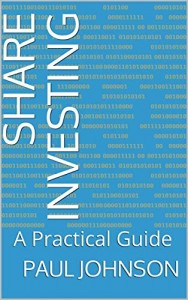Share Investing: A Practical Guide
In 2019 our director, Paul Johnson, released a book detailing practical tips for share investing.
Share Investing: A Practical Guide contains all the information you need to create a profitable share portfolio. Written for experts and novices alike, this book is packed full of practical information. It will teach you why share investing does not have to be a high risk venture. And more importantly teaches you how to create your own long-term tax effective income stream.
The book contains clear steps on how to construct a share portfolio. This includes how to decide what to buy and when to sell, as well as how to review your portfolio over time. The methods in this book have been developed and applied for over 20 years across all market cycles with outstanding results.
The book is available from Amazon Australia.
To make a time to meet with Paul click here to contact us.
Excerpt from Share Investing: A Practical Guide by Paul Johnson © 2019
Why invest in shares?
Before we get too excited and discuss share investing, I think it is wise to go back to the question, what investment options are available and why should you invest at all? The short answer is that we are all long-term investors whether we realise it or not and that is why we need to invest.
Long-term wealth creation is the actual aim for all rational investors. By long-term investing, I am referring to the rest of your life! As investors, we are not looking at a 3, 5 or 7 year investment cycle, we are looking at decades of investing.
Why invest in growth assets?
The greatest risk to long-term investments is inflation. If an investment cannot grow at a rate equal to or greater than the long-term inflation rate, then each year the investment will lose purchasing power. It is easy to look back at how “cheap” everything was 50 years ago. It is important to remember that in 50 year’s time, people will look back and say the same thing about how “cheap” things are today.
In the late 1980s a lot of retirees were lulled into a false sense of security with the high interest rates being paid on their cash savings. Personally, at that time I was receiving 16.5% pa on my term deposits. Retirees who didn’t adapt to the falling interest rates and continued to hold only cash based investments suffered true financial loss. Due to the effects of inflation, those who do not learn from the past and fail to diversify their portfolio into growth assets will suffer the same fate.


